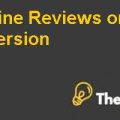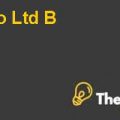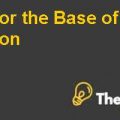PROBLEM DIAGNOSIS
The fuels costs of jets have risen significantly over the past few years and therefore all the airline companies had insisted upon maintain positive cash flows in the face of the rising fuel costs. Although the costs of the fuel prices are hedge-able however, there is nothing existent as a perfect hedge in the market wither in the exchange traded derivatives market or in the over the counter market.
At the start of the year 2012, plans were being made and the jet fuel hedging strategy for Jet Blue Airways was being discussed by the equity analyst of the company, Helena Morales. The hedging strategy that was used by the airline companies normally was the cross hedging strategy. This type of strategy was based on the idea that the jet fuel costs of the company were usually hedged by using other crude oil and the derivative contracts that were usually offered over these crude oils.
The other types of the crude oils included the Brent crude oil and WTI. Therefore, this made the company more exposed to a different kind of risk called as the basis risk. Certain dislocations tool place in the end of the year 2011 and the prices of the jet fuel of the company started to move in the same direction as of Brent crude oil instead of WTI. As a result, many airline companies faced huge losses and they were pressurized to change their hedging strategies.
Most of the airline companies decided to base their hedging strategies over the Brent Crude Oil, however, some of the companies also had the view that this might be a short term and temporary phenomenon. This report will attempt to identify that for the next year that is 2012, will Jet Airways is going to base its hedging strategies over Brent crude oil or WTI.
DISCUSSION & ANALYSIS
Jet Blue Derivative Products
A variety of hedging strategies had been used by Jet Blue including over the counter and exchange traded derivative products and also some of the airlines remained un-hedged.
Over the Counter Products
The primary derivative products used by the airlines are the options and the swap agreements. As over the counter derivative products are more customization therefore, Air Blue has always preferred over the counter derivative products. These derivatives are basically traded between the major banks and Air Blue and the counter party risk also exists. Hence, the main motive of Air Blue is to trade with 3 to 4 banks so that the overall hedging risk and the counter party risk could be minimized and the best prices could be made available for the jet fuel for the company.
These products have many advantages; for instance, the forward curves show characteristics of consistent mean and this could be easily understood from time to time. On the other hand, the options give the company right but not the obligation to trade in a specific commodity (jet fuel) or not. Through swaps, the company could easily lock in the low prices and also place a cap at the upper end of the prices so as to benefit from the eventual fuel prices. There are also many advantages of swaps over forwards and future contracts such as they reduce the transaction costs, it has much longer terms and using the swap agreements the company is able to get the best possible match between the revenues and the liabilities of the airline.
Fuel Hedging At Jetblue Airways 2012 Case Solution
Exchange Traded Products
The exchange traded derivative products are usually available for the short term and this strategy is also widely used by Air Blue as they buy futures over the heating oil or the WTI and Brent crude oil. Under the futures contracts the jet fuel is based on an underlying commodity as mentioned therefore, basis risk is also faced by the company. Basis risk is defined as the difference between:
Basis risk = Hedged item spot price – contract’s future price
Therefore, in order to make the above hedge a perfect hedge the optimal hedge ratio for each of the contract needs to be identified by the company. There are a number of the ways of calculating the optimal hedge ratio. One of the formulas for calculating the optimal hedge ratio is dividing the correlation between the spot and the future price of the contract with the volatility and the standard deviation of the contract................
This is just a sample partial case solution. Please place the order on the website to order your own originally done case solution.












